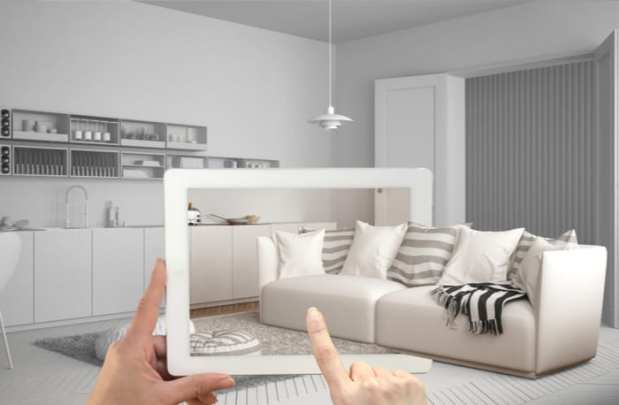Building A Visual Test-Drive Experience For Retailers

Seeing is believing. Excuse the cliché, but it does hold a good wallop of truth in commerce, especially as such technologies as virtual reality (VR), augmented reality (AR) and 3D product visualization gain traction with merchants and consumers. Indeed, evidence of the appeal of those visual retail technologies is accumulating from the furniture and home goods industry – evidence that itself helps paint the picture of what commerce will be like in the new decade.
To get a better sense of what’s happening in the world of visual retail, Karen Webster from PYMNTS recently caught up with Beck Besecker, CEO and co-founder of Marxent, a company that sells 3D commerce technology. Marxent is finding itself in increasing demand among sellers of furniture and home goods, and that makes Besecker a good tour guide for this growing area of commerce.
The story he told Webster is one of technology moving from “cool-thing” status to an increasingly expected part of the shopping experience (without losing its cool, in fact). “When AR came out,” Besecker said, “it was neat and novel and different. It was the first new mobile experience we’d had in many years.”
Indeed, augmented reality and other visual technologies can be seen as a progression from the earlier days of eCommerce, from all those photos, images and videos placed on retail websites. The goal was – and is – not only to simulate and bolster the physical shopping experience, but to provide confidence-building tools for consumers considering purchases.
Vital Senses
Touch, of course, remains one of the most important senses when it comes to shopping. Consider the buying process for a car, as Besecker asked Webster to do. “When the salesman gets you in the leather seat, you are more likely to buy,” he said. But visuals also do heavy lifting for merchants, especially when the technology, say, enables a consumer to see what a room might look like with new furniture or other objects, or with a different design. Imagination certainly is important, but there are few substitutes for actually getting a real-deal glimpse of how one’s purchases might fit into existing spaces.
And nowhere is this more true than in selling large, expensive goods, like furniture. So-called 3D product spins are the set standard, enabling potential buyers to see the item how they want it, customized and all, to get a keen visual handle on what they are actually buying to display in their living room.
It’s still early days for AR, VR and 3D product visualization, but evidence is mounting that the technology does indeed lead to more sales and larger average order values, at least according to Besecker. For instance, if a room view is offered on a merchant product page, that tool gets used at least 50 percent of the time. As well, consumers who use that tool tend to have a 60 to 70 percent increase in shopping cart additions than other consumers. And for pages or products that include augmented reality features, consumers spend four times longer on them than what would normally be the case, Besecker noted.
That’s not all, he said. Visual retail technology can reduce returns by some 20 percent, according to current data, demonstrating that consumer attitudes are influenced by those visual tools.
More Confidence
“If you have more confidence,” Besecker said, “you are more likely to buy and won’t need to return [a product].” And those visual tools also can spark ideas about other objects, goods or furniture that would work well in particular spaces. That’s one big reason for the 45 percent increase in average order values via the use of visual room planning tools. Another reason is that consumers often gain access to design consulting advice via such services, which is another confidence-builder.
That said, furniture shoppers still like to visit stores when making their purchases. “It’s still very much a test-drive category,” Besecker said. But the use of those visual tools and digital inventory tools can result in smaller stores with less expensive overhead – say, 2,500 to 5,000 square feet versus traditional stores with up to 40,000 square feet, he told Webster. “Our clients are starting to install much smaller stores,” Besecker noted.
There still remain problems with visual retail technology, not the least of which is the lack of depth for some AR images, as Webster pointed out. But the tools are taking lessons from the online gaming industry, where the illusion of reflected light creates the sense of a deep, 3D image, Besecker said. And as more consumers conduct commerce from the comfort of their homes, and as they seek to find out what new objects or furniture will look like in their living spaces, you can expect these visual tools to gain even more popularity.
Count on visual retail to gain even more ground in the 2020s. After all, good-looking images are a great selling tool.
